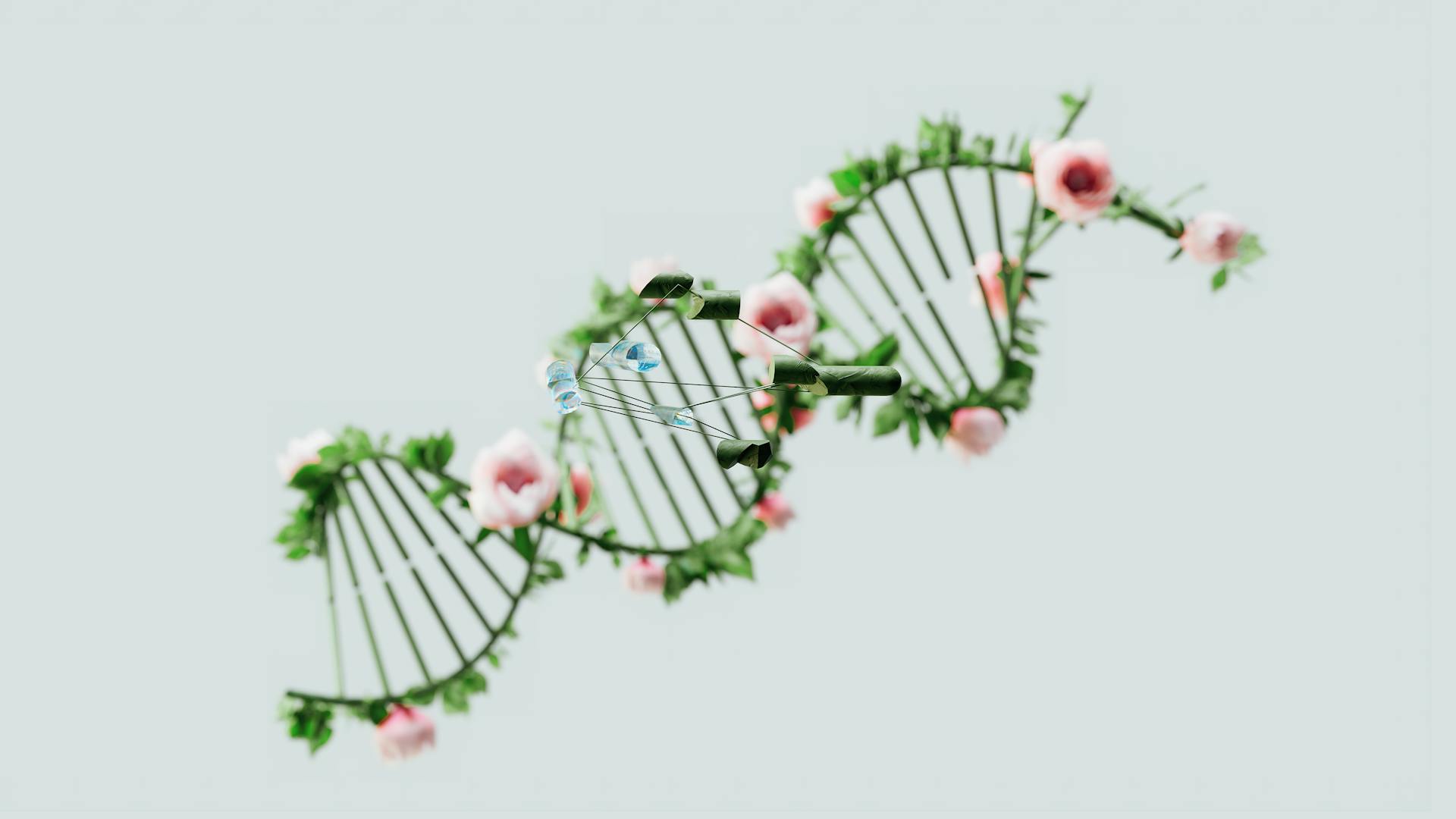
Prior to the development of DNA technology, the study of cladistics was largely based on indirect evidence, such as the similarity of physical characteristics between different species. This made it difficult to accurately determine the relationships between species. However, DNA technology has allowed for the direct analysis of DNA sequences, which has led to a greater understanding of the relationships between species.
One of the major benefits of DNA technology is that it has allowed for the development of more sophisticated cladistic methods. These methods make use of direct evidence of relationships between species, rather than relying on indirect evidence. This has led to a greater understanding of the relationships between species and has allowed for more accurate classification.
In addition, DNA technology has allowed for the study of a wider range of species. This is because DNA samples can be obtained from a variety of sources, including museum specimens. This has opened up new avenues of research and has allowed for a greater understanding of the evolution of life on Earth.
Overall, DNA technology has had a major impact on the study of cladistics. It has allowed for the development of more accurate methods of classification and has given biologists a greater understanding of the relationships between species.
Recommended read: Mitochondrial Dna Mtdna Typing
What is cladistics?
Cladistics is a approach to evolutionary biology that is concerned with the arrangement of organisms into clades, i.e. groups consisting of a common ancestor and all of its descendants. A clade can be thought of as a branch on the tree of life. The branches are identified by shared derived characters. Cladistics is also referred to as the new systematics because it is based on phylogenetics, which is the study of evolutionary relationships among organisms.
The main difference between cladistics and other approachs to evolutionary biology is that cladistics is exclusively concerned with the arrangement of organisms into clades. Other approachs, such as phenetics and evolutionary taxonomy, are concerned with the overall similarity of organisms. Cladistics is also different from these other approachs in that it is not concerned with the actual process of evolution. Instead, it is concerned with the pattern of evolution.
The first step in cladistics is to identify the characters that are shared by the organisms that are being studied. These characters can be anything that can be used to distinguish one organism from another. They can be anatomical features, behavioral traits, biochemical properties, or anything else that can be used to differentiate one organism from another.
Once the characters have been identified, the next step is to determine which of these characters are shared by groups of organisms. These characters are called derived characters. Derived characters are those that are not present in the most recent common ancestor of the group of organisms being studied.
The next step is to construct a phylogenetic tree. This tree shows the evolutionary relationships between the different groups of organisms. The tree is constructed by using the derived characters to place the different groups of organisms on different branches.
The final step is to interpret the tree. This interpretation is done by looking at the patterns of derived characters. These patterns can be used to infer the evolutionary history of the different groups of organisms.
cladistics is a powerful tool for understanding the evolutionary relationships between different groups of organisms. It is especially useful for understanding the relationships between groups that are distantly related.
Readers also liked: Common Barrier
What is DNA technology?
Deoxyribonucleic acid, or DNA, is the hereditary material in humans and other organisms. Most DNA is located in the cell nucleus (where it is called nuclear DNA), but a small amount of DNA can also be found in the mitochondria (where it is called mitochondrial DNA or mtDNA). DNA is composed of two strands that are coiled around each other to form a double helix. The structure of DNA is physical evidence that supports the theory that it is the carrier of genetic information.
DNA is sometimes referred to as the “instruction manual” for the cell because it contains the information needed to direct the cell’s functions. This information is encoded in the sequence of nucleotides, which are the building blocks of DNA. The order of nucleotides in DNA specifies the order of amino acids in proteins, which are the building blocks of all cells and determine their function.
A DNA molecule consists of two chains of nucleotides coiled around each other. The structure of the double helix is stabilized by hydrogen bonds between the bases of the two chains. The sequence of nucleotides in one chain is complementary to the sequence in the other chain. This complementarity is the basis for DNA’s role as the genetic material.
DNA is replicated prior to cell division so that each daughter cell receives an identical copy of the DNA. DNA is also transcribed into RNA, which is then translated into proteins.
The vast majority of DNA (more than 99%) is non-coding, meaning that it does not contain the instructions for making proteins. These non-coding regions are interspersed between the protein-coding regions, and most of them are involved in the regulation of gene expression.
DNA technology is a field of science that refers to the study and manipulation of DNA. It includes a wide range of techniques that are used to alter the structure and function of DNA.
DNA technology can be used to modify genes, which are the units of inheritance that are passed down from parents to offspring. Genes are made up of DNA, and they encode the instructions for making proteins. DNA technology can be used to change the sequence of nucleotides in DNA, which can change the proteins that are made and the function of the cell.
DNA technology is used in a wide range of applications, including medicine, agriculture, and forensics. In medicine, DNA technology
Discover more: Career Combines Dna Technology
What is the relationship between DNA technology and cladistics?
The relationship between DNA technology and cladistics is a complicated one. On the one hand, DNA technology has allowed for the development of cladistics, which is a method of studying the evolutionary relationships between organisms. On the other hand, cladistics has also been used to develop DNA technology.
Cladistics is a method of studying the evolutionary relationships between organisms. It is based on the principle of common descent, which states that all life on Earth is descended from a common ancestor. Cladistics is used to create "family trees" or "phylogenetic trees" that show how different groups of organisms are related to one another. DNA technology has allowed for the development of cladistics by providing a way to analyze the genetic code of different organisms.
Cladistics has also been used to develop DNA technology. DNA technology is used to sequence the genomes of different organisms. This information can then be used to create phylogenetic trees. These trees can be used to study the evolutionary relationships between different groups of organisms. In addition, DNA technology can be used to create genetic maps. These maps can be used to study the distribution of genes within and between different populations.
Expand your knowledge: Dna Technology
What are the benefits of using DNA technology in cladistics?
Utilizing DNA technology in cladistics offers many potential benefits. For one, DNA provides much more information than other data sources, such as morphology. In addition, DNA can be used to reconstruct both phenotype and genotype, whereas other data sources can only provide information on phenotype. Additionally, DNA can be used to infer relationships between groups that share a common ancestor, something that is difficult to do with other data sources. Finally, DNA data can be used to test hypotheses about relationships between groups, making cladistics a powerful tool for scientific discovery.
What are the limitations of DNA technology in cladistics?
There are a number of limitations to using DNA technology in cladistics. One of the most significant is that DNA sequences can be difficult to interpret. This is because there is often a great deal of variation between the DNA of different individuals within a species, making it hard to determine which sequences are most important for classifying the species. Additionally, DNA technology can be expensive and time-consuming, making it impractical for many researchers. Finally, DNA technology can only be used to study species that are alive today, making it difficult to apply to animals that have gone extinct.
How does DNA technology help researchers construct cladograms?
Today, DNA technology is helping researchers construct cladograms with increasing accuracy and efficiency. Cladograms are diagrams that show the relationships between different groups of organisms. They are used to help researchers understand the evolutionary history of a species and to determine which species are most closely related to each other. DNA technology has helped researchers construct more accurate and reliable cladograms by providing information about the sequence of a species' DNA. This information can be used to calculate the amount of time that has elapsed since two species divergence from a common ancestor. DNA technology has also helped researchers to identify which genes are responsible for various traits. This information can be used to determine which traits are shared by related species and which traits are unique to a particular species. DNA technology is thus providing researchers with valuable information that can be used to improve our understanding of evolution and the relationships between different species.
How does DNA technology help researchers understand the evolutionary relationships between different species?
DNA technology has revolutionized the study of evolutionary relationships between different species. By analyzing the DNA of different species, researchers can now determine how closely related two species are and how long ago they diverged from a common ancestor. This information has allowed scientists to piece together the evolutionary history of life on Earth and to better understand the processes of evolution.
DNA technology has also been used to study the evolutionary relationships between different populations of the same species. By looking at the DNA of different populations, researchers can determine whether they are related and how long ago they split from a common ancestor. This information can help us to understand the history of human populations and the processes that have shaped their evolution.
DNA technology has also been used to study the evolutionary relationships between different individuals. By looking at the DNA of different individuals, researchers can determine how closely related they are and how long ago they diverged from a common ancestor. This information can help us to understand the history of human populations and the processes that have shaped their evolution.
Expand your knowledge: How Long after Using Easy-off Can I Use the Oven?
What are some of the challenges associated with using DNA technology in cladistics?
The study of cladistics is the study of the relationships between various groups of organisms. This information can be used to reconstruct the evolutionary history of life on Earth. One of the challenges associated with using DNA technology in cladistics is that DNA is often degraded and fragmented after an organism dies. This makes it difficult to obtain accurate and complete DNA sequences from fossils. In addition, due to the long time spans involved, DNA mutations can accumulate over time, making it difficult to determine the relationship between two groups of organisms.
Another challenge associated with using DNA technology in cladistics is that different DNA sequences can have different rates of evolution. This means that when two groups of organisms are compared, the group with the faster-evolving DNA sequences will appear to be more closely related than the group with the slower-evolving DNA sequences. This can lead to inaccurate results and can make it difficult to determine the true relationships between various groups of organisms.
Finally, DNA technology is expensive and time-consuming. This can make it difficult to obtain the large amount of data needed to accurately reconstruct the evolutionary history of life on Earth.
Take a look at this: When to Stop Using Owlet?
How can DNA technology be used to improve the accuracy of cladistic analyses?
cladistics is a method of inferring evolutionary relationships between organisms by looking at their shared derived characters, rather than their overall similarity
DNA technology can be used to improve the accuracy of cladistic analyses in a few different ways. For one, DNA sequencing can be used to directly compare the genomes of different organisms and look for shared derived characters. This is especially useful for studying closely related species that may not be easily distinguished by morphology. Additionally, DNA can be used to create phylogenetic trees, which can then be used to assess the relative closeness of different species. Finally, DNA analyses can be used to study changes in gene expression over time, which can provide insights into the evolutionary history of a species.
Frequently Asked Questions
How did DNA technology lead to more use of cladistics?
It showed that different looking animals are actually related, changing ideas about which animals were closely related (apex).
Is DNA technology the answer to better policing?
There is no doubt that DNA technology can be an extremely valuable tool in the fight against crime. By identifying and tracking the whereabouts of suspects, it can help law enforcement officers solve crimes more quickly and prevent further incidents from occurring. However, there are also concerns that DNA databases could be used to unfairly target innocent people without their consent. This is especially true if police forces use so-called 'presumptive matches' – where a suspect's DNA is matched to that found at a crime scene even though they may have had nothing whatsoever to do with it. This raises the risk that innocent people could face imprisonment or even death as a result. To minimise these risks, governments must take steps to protect the privacy of individuals who give their DNA samples and ensure that powerful policing tools are not abused. These measures may include strict rules about how and what data can be accessed by police forces, as well as proper procedures for how individuals can challenge erroneous matches.
How long does DNA last?
DNA can last for thousands of years.
How do police use DNA to investigate crimes?
Police collect DNA samples from people they suspect of involvement in a crime. They compare that DNA sample to the DNA profiles of people who have been arrested or convicted for the same crime. If the match is strong, police can use that information to help them identify the perpetrator.
What are the critical challenges faced today in DNA testing?
One of the main challenges today in DNA testing is that there is a significant growth in sample submissions, with many samples waiting to be processed. Additionally, there are often backlogs of samples, which can make it difficult for laboratories to keep up with the demand. There is also concern over how well automated processing and data review systems will work when dealing with such a high volume of samples. Generally speaking, many law enforcement investigators are eager to participate in "swab-athons" - events where they take large numbers of DNA samples from crime scenes - in order to speed up the process.
Sources
- https://answercatch.com/why-did-dna-technology-lead-to-more-use-of-cladistics/
- https://estatename.com/why-did-dna-technology-lead-to-the-use-of-cladistics/
- https://study.com/academy/lesson/cladistics-characteristics-uses-examples.html
- https://dna-technology.com/
- https://www.genome.gov/genetics-glossary/Recombinant-DNA-Technology
- https://knowledgeburrow.com/what-is-dna-technology-used-for/
- https://www.merriam-webster.com/dictionary/cladistics
- https://biologydictionary.net/cladistics/
- https://answerdata.org/why-did-dna-technology-lead-to-more-use-of-cladistics/
- https://carm.org/dictionary/cladistics/
- https://socratic.org/questions/what-is-dna-technology
- https://brainly.com/question/6402463
- https://www.forbesinfotech.com/why-did-dna-technology-lead-to-the-use-of-cladistics/
- https://wikisuggest.com/why-did-dna-technology-lead-to-the-use-of-cladistics/
- https://byjus.com/question-answer/what-is-a-cladistics/
Featured Images: pexels.com


